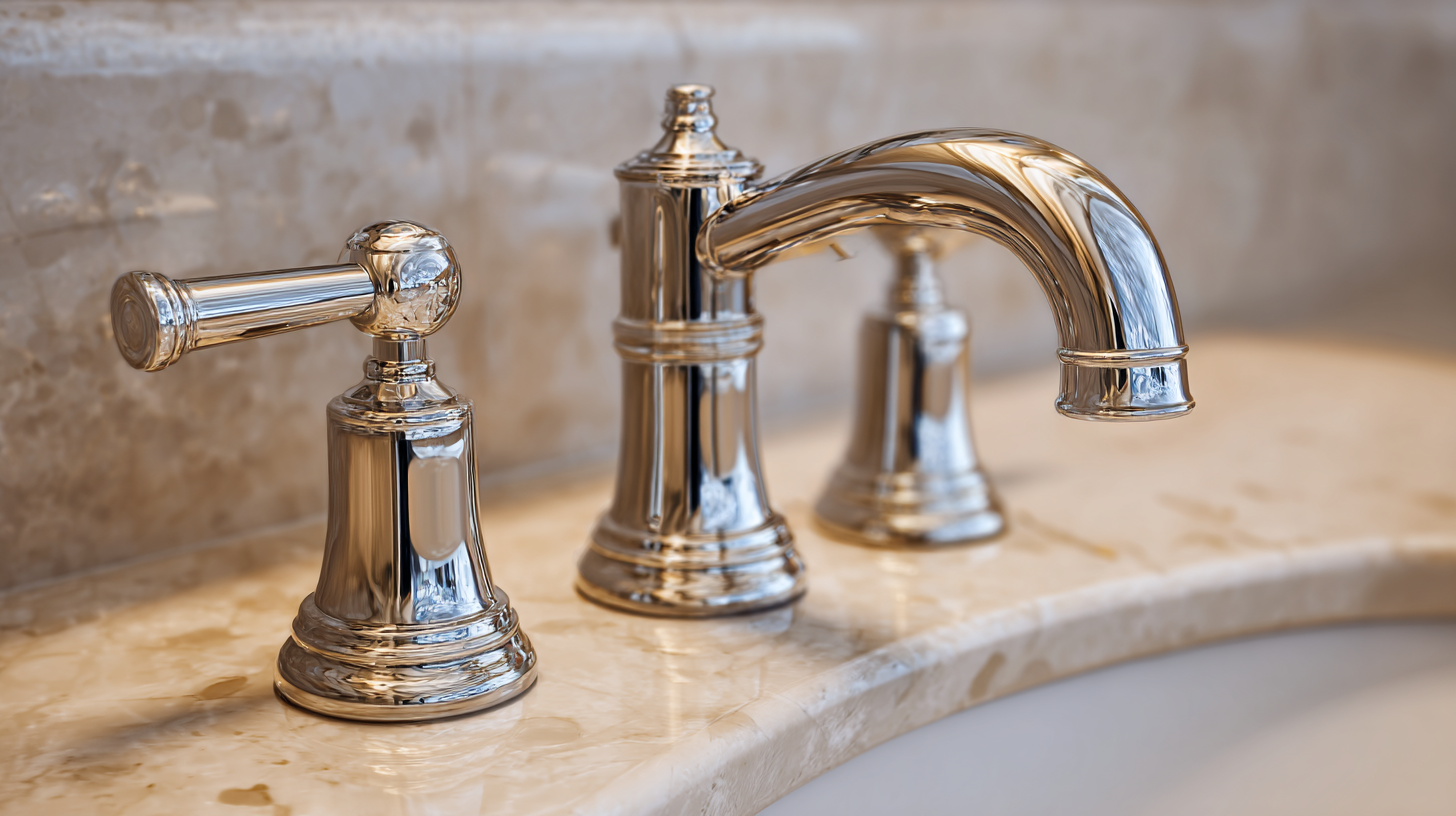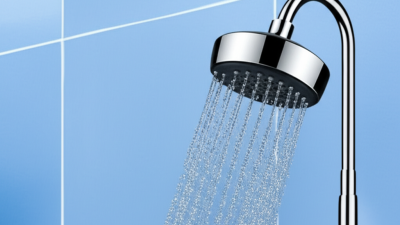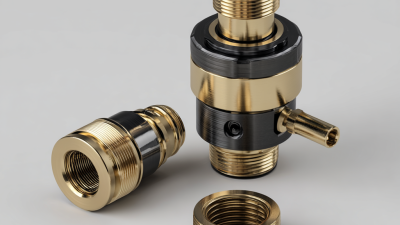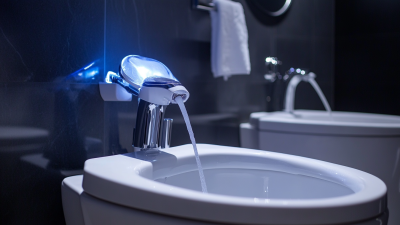In the world of plumbing fixtures, the faucet handle plays a crucial role in both functionality and design. According to the 2022 Plumbing Fixtures Market Report, faucet handles account for approximately 15% of the overall market share in the bathroom and kitchen fittings segment, highlighting their significance in everyday usage. As consumers become more discerning about their home fixtures, understanding the different types, materials, and installation tips for faucet handles is essential for both homeowners and professionals alike.

Expert insights from industry leaders emphasize the importance of quality in faucet handle selection. John Smith, a plumbing industry consultant, states, "A well-designed faucet handle not only enhances the aesthetic appeal of a space but also contributes to the efficiency of water usage." With sustainability becoming a key concern in modern plumbing, choices in faucet handles have extended beyond mere style, focusing on longevity and environmental impact as well.
This article aims to explore the various types of faucet handles available, the materials commonly used in their construction, and practical installation tips that can aid both DIY enthusiasts and professionals in making informed decisions. Whether you are renovating your kitchen or simply replacing an old faucet, understanding these elements will ensure that you choose the right faucet handle for your needs.
Faucet handles, often overlooked in kitchen and bathroom design, are essential for both functionality and aesthetics. There are several types of faucet handles available, each catering to different user preferences and accessibility needs. The most common types include lever handles, which allow for easy one-handed operation, and knob handles, which may require a more dexterous grip. According to a 2022 market analysis by the National Kitchen & Bath Association, lever handles accounted for 60% of faucet sales, reflecting a growing trend towards user-friendly designs in modern installations.
In addition to their types, faucet handles come in various materials that affect their durability and appearance. Metal finishes such as chrome, bronze, and nickel are popular due to their resistance to corrosion and ease of cleaning. A recent report by the American Society of Interior Designers highlights that nearly 75% of consumers are now opting for durable and sustainable materials, indicating a shift in priorities towards longevity and environmental considerations. When selecting faucet handles, it's crucial to consider both the style and material to ensure they complement your existing decor while meeting practical needs.
Faucet handles are essential components that influence both functionality and aesthetic appeal in bathrooms and kitchens. Their durability heavily depends on the materials used in their construction. Common materials include chrome, stainless steel, brass, and plastic, each offering distinct benefits and challenges. According to a report by the American Society of Plumbing Engineers, brass and stainless steel remain the most preferred materials due to their resistance to corrosion and tarnishing, ensuring longevity even in high-moisture environments.
Chrome finish, while visually striking, can show wear over time—especially in households with hard water, which can lead to mineral buildup. On the other hand, plastic handles are lightweight and cost-effective but may not withstand the test of time or the stresses associated with daily use. The National Kitchen and Bath Association (NKBA) highlights that investing in high-quality materials can significantly extend the life of faucet handles, with brass options often outlasting other materials by as much as a decade. This underscores the importance of material selection when considering both durability and overall kitchen or bathroom design.
When installing faucet handles, it’s crucial to consider the specific type of handle you are dealing with, as each comes with its own set of installation requirements. For instance, single-handle faucets, which have gained popularity among homeowners for their ease of use, typically require a straightforward installation process involving either a threaded or a set screw mechanism. According to the National Kitchen & Bath Association, nearly 73% of homeowners prefer these types due to their versatility and space-saving design. Ensuring that you have the right mounting hardware—usually included with your faucet—will streamline this process.
For multi-handle faucets, the installation can be more complex. These setups may involve separate handles for hot and cold water, often requiring precise alignment and more extensive plumbing knowledge. Industry research indicates that about 60% of DIY enthusiasts struggle with leaks due to improper installation of multi-handle setups. Utilizing plumber's tape and ensuring a tight fit can mitigate these issues. Additionally, checking for compatibility with existing plumbing fixtures is essential to avoid complications down the line. Engaging with these tips can lead to a successful installation and enhance the overall functionality and aesthetic of your kitchen or bathroom.

To prolong the lifespan of your faucet handle, regular maintenance is essential. First, keep the handle clean by wiping it down with a soft cloth and mild detergent. Avoid abrasive cleaners that could scratch the surface. Regular dusting helps prevent grime buildup, which can lead to deterioration over time. Pay special attention to the areas around the handle where moisture tends to accumulate, as this can promote corrosion.
Additionally, check for any signs of wear, such as loose fittings or cracks in the handle. If you notice any issues, it’s best to address them promptly to prevent further damage. Lubricating moving parts with a silicone-based lubricant can also enhance functionality and prevent sticking. Lastly, consider replacing washer or cartridge components as needed, as these interactions primarily affect the handle's operation. By implementing these best practices, you can ensure that your faucet handle remains in good working condition for years to come.
Faucet handles are essential components for the control of water flow in homes and businesses, yet they often encounter issues that can lead to frustration. A report from the Plumbing Manufacturers International noted that over 20% of faucet-related complaints stem from problems with the handles themselves, including leaks and poor performance. Common issues like loose handles can lead to difficulty in turning the faucet on or off, while worn-out washers might cause persistent dripping, which not only wastes water but could also increase utility bills.

To troubleshoot these common faucet handle issues, homeowners should start by checking the tightness of the handle. If it's loose, simply tightening the screw underneath the handle can often resolve the problem. For drips, examining and replacing worn-out washers or O-rings is crucial; research indicates that repairing leaks can save an average household up to 10,000 gallons of water annually. Regular maintenance, such as cleaning the faucet aerator and inspecting seals for wear, can prolong the lifespan of faucet handles and enhance performance.






